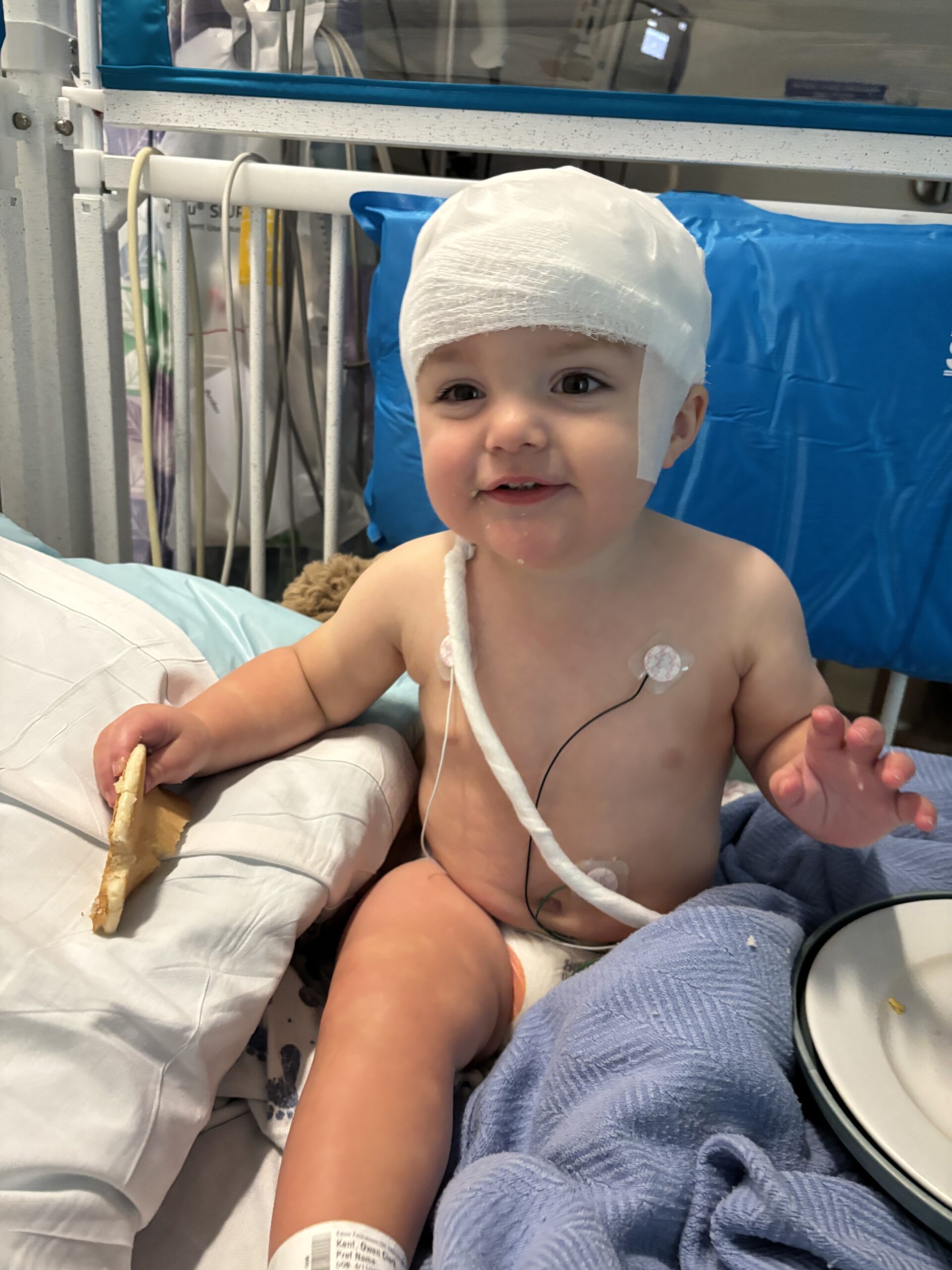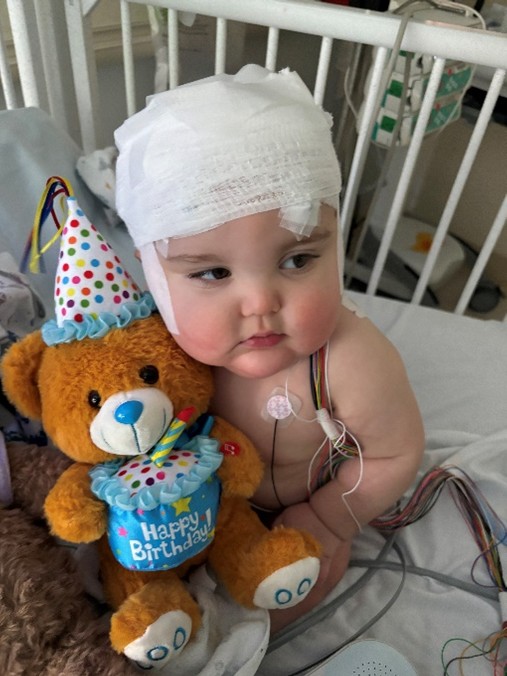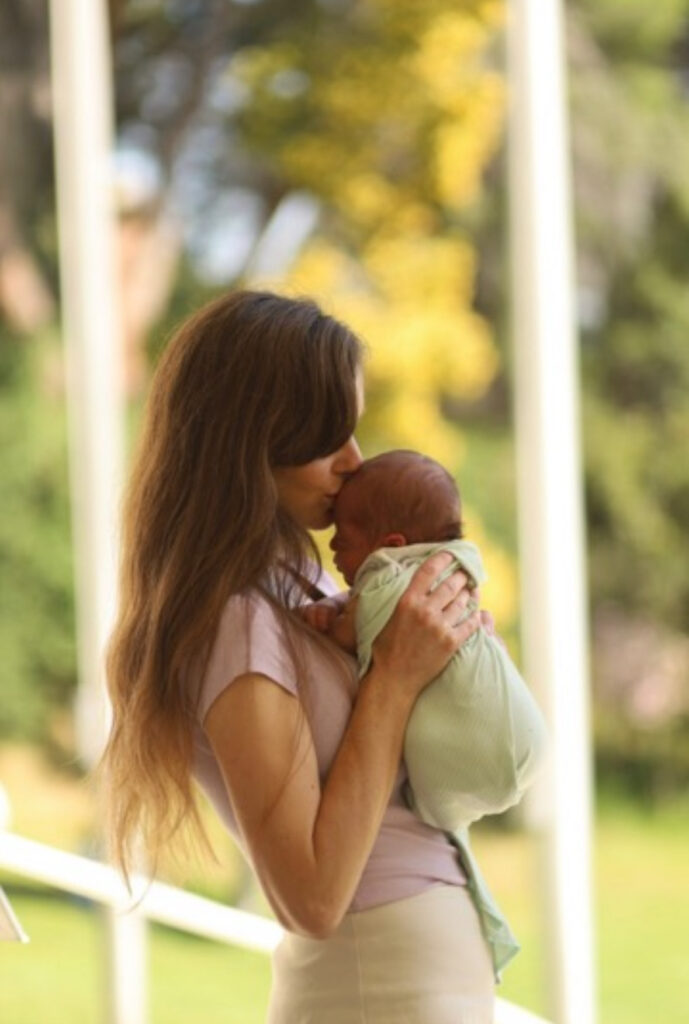This week, I spent another few days in the hospital with Owen. He had been having seizures reminiscent of the infantile spasms, and nothing terrifies me more than that. On top of this, we knew from a recent EEG that his brain shows high seizure potential with a very low threshold. Even though he has been taking his Keppra, we’ve noticed an increase in his staring spells and other suspicious activities. Thankfully, there has been no prolonged seizure activity for nearly a month.
Still, when it comes to spasms, the protocol is strict: if a patient isn’t on a medication specific for them, it means an emergent EEG in the ER. Time is brain. If hypsarrhythmia is behind the spasms, damage can happen quickly. So, on Monday afternoon, I packed Owen up and rushed him to the hospital, where we went through the familiar process of admission and continuous EEG. The care we received was excellent, and for that, I’m deeply grateful.
Oddly, there are things I appreciate about being in the hospital. Having worked in healthcare my entire career, I feel strangely comfortable in that setting. I feel safe there. I can watch the monitor, know Owen is okay, and trust that if something happens, we’re surrounded by people ready to help.
But of course, there are many things I don’t like. First and foremost, Owen being confined to a crib, tethered by wires, watched on camera. We make the most of it, I often crawl into the crib with him, but I still hate seeing him poked and prodded.
Hospitals also leave behind sensory imprints you can’t shake: the sounds of someone screaming in the ER, the smell of bleachy cleaning solutions, the trays of food that never quite smell like food. These things stay with you, and they weigh heavy.
Owen handles hospitalization better than I do. This week, he has been a real trooper. I couldn’t be prouder of his resilience. Of course, kind nurses, unlimited Bluey and an abundance of pancakes help!
For me, leaving his room is almost impossible when Owen is in the hospital. I only stepped out twice the entire stay. Once was for coffee, and that’s when something happened I’ll never forget.
On my way back, I passed a courtyard visible through tinted windows. Below, I saw a gathering: colorful signs with a child’s name, a man playing guitar, therapy dogs, family members of all ages, hospital staff. The sunlight streamed in gently, just before the peak of LA’s heat. At first, it looked like a celebration of life.
But then I realized, it was a goodbye. A baby, maybe 6 months old, was being brought outside to pass away. I stood frozen as the mother gently touched her baby’s wrist, then signaled her own mother, who reached for the child’s head and neck. Doctors and nurses gathered to remove tubes, check pulses. Family members stood, hugging and crying.
I had just witnessed something sacred and devastating. I couldn’t bury this trauma. My heart ached for them, and all I wanted was to go outside, hold them, and show love, sympathy, and compassion. Instead, I rushed back to Owen’s room, climbed into the crib, wrapped him in my arms, and cried. Thank God, through all he has endured, he is still here with me.
As expected, Owen’s EEG remains irregular, showing abnormalities across both hemispheres of his brain. This means a low threshold for seizures and high potential for complex types. His Keppra dose was increased, and after a few days of monitoring with no witnessed spasms, we were allowed to go home.
But less than 24 hours after discharge, I saw it again. The spasms. What do you do in that moment? Do you rush back, demand another EEG? I tried calling neurology. I sent messages. No response. I stared at the leftover prednisolone from his last treatment, wondering if I should restart it myself.
For now, I’m watchfully waiting, tracking every detail of his development to make sure there’s no regression. He remains happy, eating, climbing, moving. So all I can do is put one foot in front of the other.
Next month, we’ll see specialists at a Level 4 epilepsy center, one of the best programs in the country for infantile spasm-type epilepsies. We’re eager for answers, even though the hardest part is knowing there may not be any.
What kind of seizures is he having? Are they truly spasms? What’s next? Will we ever know why this is happening? Will he be okay? What will his developmental path look like?
These are questions without answers right now.
What I do know is this: Owen’s life is precious. He is safe. I can hold him, read to him, feed him, watch him smile. He is not suffering. He is alive, and I have my baby. Not every parent can say that. I carry so much empathy and love for the family who lost their baby in that courtyard, and for all parents of medically complex children. Truly, for all parents. For anyone who loves and cares for children.
Because at the end of the day, despite the trials and tribulations, the small triumphs are what keep us going.



